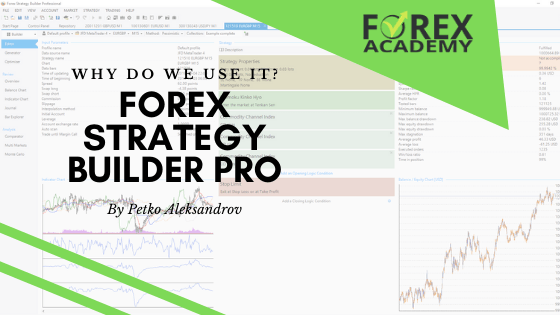Designing a Forex strategy – the first step before trading
One of the worst things that can happen to a novice Forex trader is that they achieve big profits virtually instantly. Saying that this is something to be avoided may seem counter-intuitive, but there is logic to the position. It should be pointed out that it only applies if the trader in question hasn’t taken the time and put in the work needed to create a coherent trading strategy. All too often, however, traders decide to ‘have a go’ at dealing on the Forex markets having been seduced by the many articles and websites claiming that they offer a chance to get rich quickly and easily. Beginners luck can sometimes result in early gains and, before they know it, novice traders have put more of their money on the line, haven’t worried about safety nets like stop-loss mechanisms, have failed to take the multiplying impact of leverage into account – all of this on top of the many expenses incurred in simply running an account – and are staring down the barrel of substantial losses.
It can be very different of course, but only if you take the time to do some planning before putting your money where your trading instincts are (and the first lesson to learn would be that you should never rely purely on your instincts). The Forex markets offer global, round the clock opportunities for traders of every type and size, with excellent liquidity meaning that trades can be carried out quickly and simply. The relative volatility of the markets is what drives much of the activity, as traders from every corner of the globe seek to take advantage of often very small shifts in the relative values of currency pairs. All of these are plus points, but they also represent potential hazards; ease of access means it’s simple to keep chasing losses, high liquidity means you’ll never have any trouble finding currencies to spend your money on and the volatility that drives profits can also sometimes create losses that run out of control to devastating effect. All of which is another way of saying that you should never sit down to actually trade without first designing your own Forex trading strategy. These are six steps toward designing a Forex strategy:
-
Decide on your time frame
Forex trading involves work such as checking charts, reviewing data, following the markets and monitoring external factors which might impact on the value of the currency. Ask yourself how often you want to have to do all of that work and how long you’re planning on holding the positions you take. In simple terms, the question is whether you’re a day trader or a swing trader. A day trader often adopts a ‘scalping’ technique, making multiple small trades during the course of a single day, opening and closing positions quickly to take advantage of small shifts in currency and then moving on to the next. A swing trader, on the other hand, uses the data available to try to identify bigger shifts in the value of currencies and to set up positions that can profit from these shifts for as long as they last.
-
Look for indicators
Designing a successful Forex strategy is based on identifying an emerging trend at the earliest possible stage, and making that identification is only possible using the available indicators. The most commonly used indicators are moving averages, which track the average price of a currency over a specific period of time, and in this way help to identify trends. In most cases, traders will track two moving averages, one based on a longer period of time and one on a more recent period. The time to open a position is when the more recent moving average moves above or below the more long term moving average. Using moving averages in this way is one of the simplest means of spotting a trend in Forex markets. With experience and a deeper understanding of the data, traders will develop their own additional indicators, but moving averages are a good place to start.
-
Decide on risk
Different traders have a different approach to risk. In many senses, this is simply a question of temperament, with some people able to handle bigger risks than others – usually in pursuit of bigger profits – while others prefer to opt for a small risk/small returns strategy. Neither approach is definitively better than the other, but designing a successful Forex strategy means deciding what level of risk you’re willing to cope with. Many inexperienced traders only start to think about losing money once it actually begins to happen, and this is why they often make the mistake of risking more of their capital by chasing their losses in a manner driven by emotion rather than logic. Think about how much money you’re willing to lose on each trade and on a full day’s trading and stick to these limits when designing Forex strategy. Set a percentage of your capital and, as soon as your losses hit that figure, withdraw from the day’s trading.
-
Set your parameters
One of the most important parts of any strategy involves setting stop-loss orders. These are tools that automatically take you out of a trade when a certain point is hit, protecting you from the risk of further losses. Setting stop-losses is vital for two reasons – it can stop your losses running out of control and it frees you from the responsibility of having to monitor every position for as long as it is open. You should be monitoring your account closely, of course, but the speed with which markets can move still makes it possible for losses to mount before you notice them. Stop losses can be set using various criteria, including the price of a particular currency, a percentage of your overall account, the volatility of the market measured by how much it moves within certain price bands and even a specific time limit.
-
Write your strategy down
It may sound like a rather old fashioned process in this era of digital connections and automated processes, but writing your strategy down is by far the best way of making sure that the details are set in your mind. In addition to this, it will give you a resource to turn to when the ups and downs and stresses of trading make it difficult to stick properly to the rules you’ve drawn up for yourself. Seeing them set down in black and white can be a useful reminder of why you thought those rules were a good idea in the first place.
-
Keep a detailed record
Having tested your strategy out using the free demos offered by many trading platforms, and then made any adjustments needed, you should keep a detailed record of every day’s trading after you complete designing the Forex strategy. Record every position, how it played out and the amount of profit or loss generated. Write down why you made any decisions you made (i.e. why you chose to close a position or increase the amount invested) and be honest – if you closed a position too soon and lost the chance to make more money, then record the fact. It could be that you’re working with a short term strategy anyway, and you’re willing to give up the extra profits in order to pursue multiple smaller deals. If so, writing it down will solidify the strategy and establish whether it may be worth modifying. Try to honestly record any emotions which prompted decisions, as you may see a pattern, such as investing more when you’re angry, or panicking over losses and cutting other positions short.



